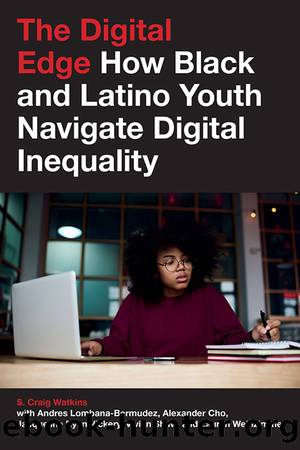The Digital Edge by unknow

Author:unknow
Language: eng
Format: epub
Publisher: New York University Press
Design Thinking
As part of our work with the UT Crew we decided to introduce them to some of the techniques associated with design thinking, a set of principles that intend to spark inquiry, problem solving, experimentation, and innovation. There has been a growing amount of attention devoted to the movement to expand the presence of coding in primary and secondary schooling. Across the United States and around the world, design consultancies, educators, and business leaders have been quietly making a case for bringing design thinking into the Kâ12 environment.19 Chris Pacione, director of the LUMA Institute in Pittsburgh, believes that design should be as pervasive as reading, writing, and arithmetic. Pacione lays out the case for how design literacy or âpervasive competency in the collaborative and iterative skills of âlookingâ and âmakingâ to understand and advance our worldâ could represent a breakthrough in the history of common literacy.20
Moreover, many of the ideas associated with design thinking align with the view that learning is meaningful when it is inquiry based rather than rote, experiential rather than abstract, production oriented rather than test and memorization heavy, and situated in a broader universe of experience and expertise rather than the four walls of a classroom. Throughout our work with the UT Crew we insisted that they leverage their world, their experiences, and their expertise to inform and enrich the story they wanted to tell about food insecurity and childhood obesity in their community. We wanted to foster a learning environment in which students could link the game design process to settings, interests, and conditions beyond school. Also, we subscribed to the view that connecting game creation to their everyday lives would make the project more relevant and the learning experience more meaningful.
Specifically, our design challenge required students to build a game prototype that addressed the issue of childhood obesity. We chose this topic for three reasons. First, Freeway was located among a sequence of zip codes populated by youth from lower-income Latino, African American, and immigrant households. Children and teens from these areas were disproportionately more likely than teens from white, Asian, and affluent zip codes to be obese for a variety of reasons including geography, income inequality, and food desert conditions.21 Second, because childhood obesity intersects with a mix of academic subject areas including science (i.e., biology), health (i.e., nutrition), and social studies (i.e., social inequality), we concluded that the project could support the development of academic skills such as inquiry, writing, and analysis. A series of prior discussions with the teacher and the district officials led us to select a project that could model how digital content creation could intersect with already established academic courses.
Finally, we wanted to select a topic that facilitated an opportunity for students to experience real-world engagement with their community in the design of their game. The very neighborhood that students lived in could serve as an effective setting for catalyzing youth civic engagement, media making, and voice. As Hart and Kirshner explain, âClear, present, and compelling
Download
This site does not store any files on its server. We only index and link to content provided by other sites. Please contact the content providers to delete copyright contents if any and email us, we'll remove relevant links or contents immediately.
Time Management Made Easy: How to Cultivate New Habits, Improve Productivity and Get Things Done by Joshua Strachan(2365)
The 7 Habits of Highly Effective People by Stephen R. Covey & Sean Covey(2098)
The Concise Laws of Human Nature by Robert Greene(1712)
Doesn't Hurt to Ask by Trey Gowdy(1555)
Primal Leadership by Daniel Goleman(1124)
Hook Point: How to Stand Out in a 3-Second World by Brendan Kane(1098)
HBR's 10 Must Reads 2021 by unknow(1044)
Don't Sweat the Small Stuff...and It's All Small Stuff by Richard Carlson(1012)
Amazon Unbound by Brad Stone(979)
100 Things Successful People Do by Nigel Cumberland(963)
HBR's 10 Must Reads 2021 by Harvard Business Review(955)
The Job Closer by Steve Dalton(937)
Master of One by Jordan Raynor(934)
Lives of the Stoics by Ryan Holiday & Stephen Hanselman(899)
Declutter Your Mind: A step by step guide to learn to control your thoughts, stop worrying, relieve anxiety and eliminate panic attacks and negative thinking by Mia Chandler(875)
The Power of 100! by Shaun King(842)
Conflicted by Ian Leslie(798)
Coders at Work: Reflections on the craft of programming by Peter Seibel(787)
The Book of Hope by Jane Goodall(743)
